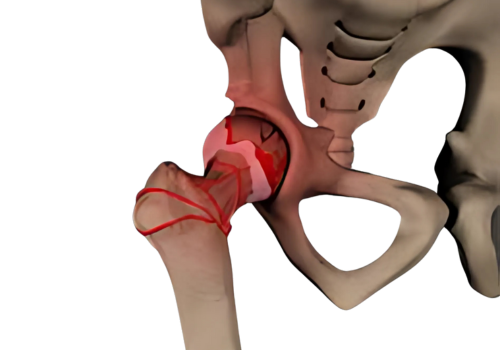.png)
Avascular Necrosis (AVN), also known as osteonecrosis, is a condition in which the bone tissue dies due to a lack of blood supply. Over time, this can lead to joint pain, bone collapse, and arthritis, particularly in weight-bearing joints like the hip, knee, shoulder, and ankle.

.png)
Fractures or dislocations can damage blood vessels supplying the bone.
Long-term use of steroids (e.g., for asthma or autoimmune diseases) increases AVN risk.
Damages blood vessels and affects bone health.
Sickle cell disease, lupus, diabetes, and kidney disease can contribute to AVN.
Conditions that impair blood circulation can lead to AVN.
Some cases occur without any clear reason.
Early Stage (Silent Phase) – No symptoms, detected only on MRI.
Mid-Stage (Pain Begins) – Hip or knee pain during movement, mild stiffness.
Advanced Stage (Bone Collapse) – Severe pain, joint stiffness, difficulty walking.
Most Commonly Affected Areas: Hip (Femoral Head), Knee, Shoulder, Ankle
.png)
(4).png)
NSAIDs (Pain relief – Ibuprofen, Naproxen)
Bisphosphonates (Slows bone damage – Alendronate)
Blood thinners (Prevents clotting in AVN-related conditions)
Reduce weight-bearing on the joint (use crutches).
Avoid alcohol and corticosteroids.
Physical therapy to maintain joint mobility.
A small hole is drilled in the bone to relieve pressure and stimulate new blood vessel growth.
Best for early-stage AVN before bone collapse.